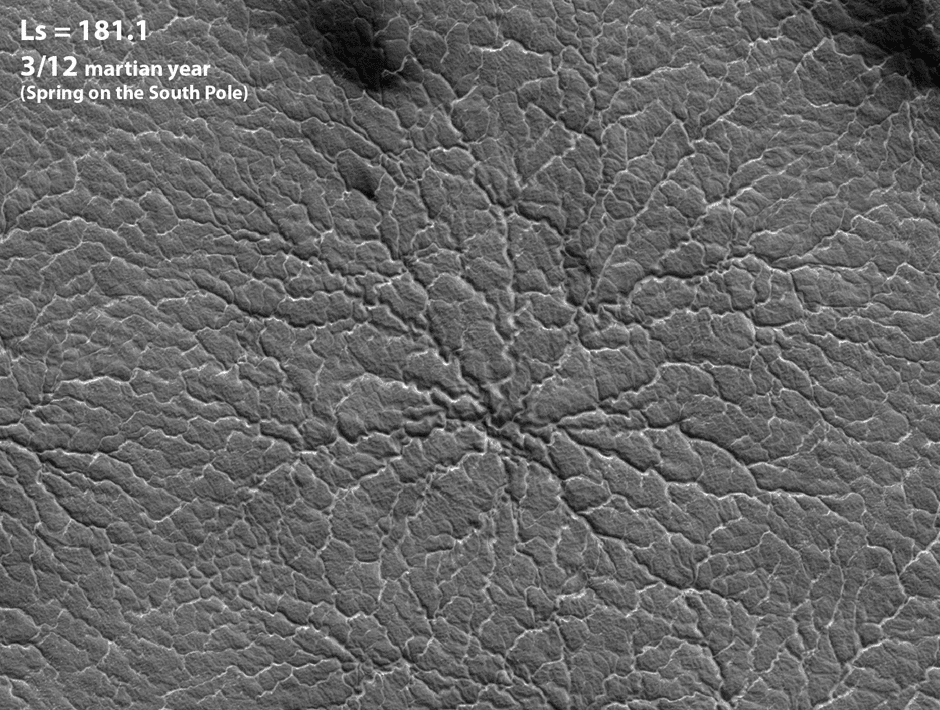Bruce Murray Space Image Library
Seasonal changes of araneiforms ("spiders") near Mars' south pole

The images were chosen based on those shown in this presentation by Candy Hansen (PDF) in December, 2007. More information about the animation is included in Egorov's blog here (in Russian).
Here is the HiRISE team caption for the araneiform images:
This caption is part of a December 2007 AGU presentation "Spring at the South Pole of Mars."
The sequence of events experienced by araneiform (spider-like) terrain at Mars' south pole are investigated in a series of images acquired through spring and summer in the southern hemisphere.
In subimage 1 (taken from PSP_002532_0935) we zoom in on a single "spider." This is a radially organized collection of channels in the surface, covered by a layer of translucent seasonal carbon dioxide ice. The "date" is Ls = 181.1. (Ls is the way we measure time on Mars: at Ls = 180 the sun passes the equator on its way south; at Ls = 270 it reaches its maximum subsolar latitude and summer begins.)
Subimage 2 (PSP_002850_0935) was acquired at Ls = 195.4. Four dust fans have emerged from the spider's channels. Translucent ice is warmed from below, and evaporates below the seasonal ice layer. The gas finds a weak spot and vents to the top of the ice layer above, carrying dust from the surface along. The dust is blown around by the prevailing wind.
Subimage 3 (PSP_002942_0935) was acquired at Ls = 199.6. Dust is getting trapped in the channels.
Subimage 4 (PSP_003496_0935), acquired at Ls = 226, shows that the wind direction has changed, the existing fans have lengthened, and there are numerous new fans coming from the channels as the overlying ice layer thins.
Subimage 5 (PSP_003641_0935) was taken at Ls = 233.1, when most of the surface frost is gone. The channels are bright because the sun is shining more directly on the walls. A thin lane of dark dust can be seen on the bottom of the largest channels.
Subimage 6 (PSP_005579_0935) was taken at Ls = 325.4, well into southern summer. All seasonal frost is gone. It is clear that channels are carved into the surface, not the seasonal ice. Fans have disappeared in the sense that they no longer contrast with the very surface material that they came from in the first place. The surface material is water-ice cemented dirt covered with a layer ~5 cm deep of desiccated silt-sized dust, which is redistributed every season in this process of fan creation and deposition. Written by: Candy Hansen (23 December 2007)


 Explore Worlds
Explore Worlds Find Life
Find Life Defend Earth
Defend Earth

